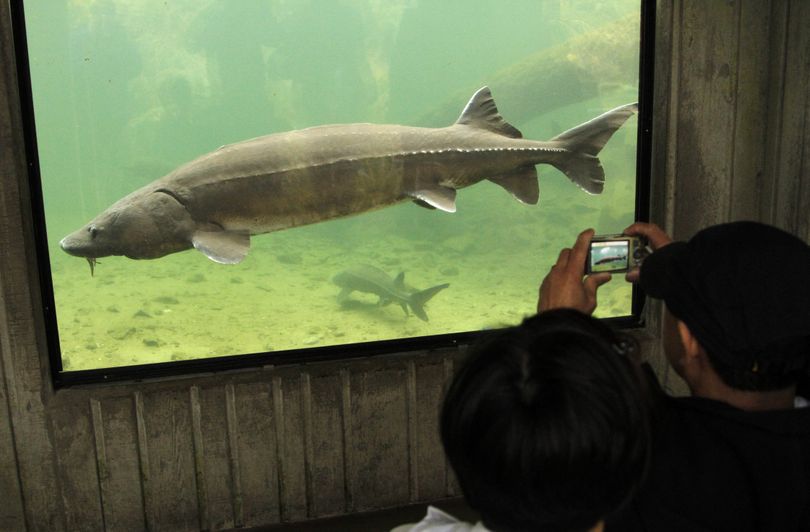Lower Columbia sturgeon catch to be reduced 38 percent

FISHING -- For the third straight year, fish and wildlife directors from Washington and Oregon have agreed to reduce the catch of white sturgeon on the lower Columbia River, where the species has declined in abundance in recent years.
The total allowable harvest of white sturgeon below Bonneville Dam will be reduced from 22.5 percent of the “legal-size” fish to 16 percent in 2012.
The new harvest rate will hold the combined catch by sport and commercial fisheries to 9,600 sturgeon measuring 38 to 54 inches long. Last year’s guideline for those waters was 15,640 fish, although only 14,488 were harvested.
This year’s agreement will reduce the sturgeon harvest in the lower Columbia River by 38 percent, following a 30 percent reduction in 2011 and a 40 percent reduction the previous year.
The abundance of legal-size sturgeon has declined nearly 50 percent since 2007, according to surveys by both states. Factors often cited for the decline include increased predation by sea lions and a drop in the abundance of smelt and lamprey, which contribute to sturgeons’ diet.
Read on for more details from the Washington Department of Fish and Wildlife media release:
Concerned by these trends, the fish and wildlife commissions charged with setting policy for each state called for significant catch reductions in 2012 during separate meetings last week. The responsibility for negotiating a common catch rate fell to the fish and wildlife directors of each state.
“This was not a difficult negotiation,” said Phil Anderson, director of the Washington Department of Fish and Wildlife. “Both directors came into this discussion with serious concerns about the status of the resource and a commitment to make a significant reduction in the 2012 harvest level. I also heard stakeholders’ concerns about the decline in the sturgeon resource and their support for taking a more conservative approach in our harvest management.”
Roy Elicker, director of the Oregon Department of Fish and Wildlife, agreed, noting that the discussion quickly turned to how to best manage the 2012 fishery under the reduced harvest level.
“It’s clear that recent trends in sturgeon populations warrant a more precautionary approach,” Elicker said. “For 2012, the plan is to maintain the season and catch-allocation structure that has been in place for several years, but with shorter fishing periods.”
Under the 16 percent harvest rate, the portion of the catch available to recreational fisheries will be allocated as follows: 4,160 fish in the estuary, 2,080 above Wauna and between 1,768 and 2,022 in the Willamette River.
The directors agreed to some flexibility in the portion of the catch assigned to the Willamette River. This flexibility may be necessary to meet Oregon’s goal of four sturgeon retention days on the Willamette, Elicker said.
Projections indicate that 65,000 white sturgeon between 38 and 54 inches will be present below Bonneville Dam this year.
Fishery managers from Washington and Oregon will meet Jan. 26 in Portland to set this year’s fishing seasons for sturgeon and spring chinook salmon on the lower Columbia River. Later in the year, the states plan to begin a public process involving fishermen to fully review current sturgeon management strategies on the Columbia and Willamette rivers prior to the 2013 fishing season.
